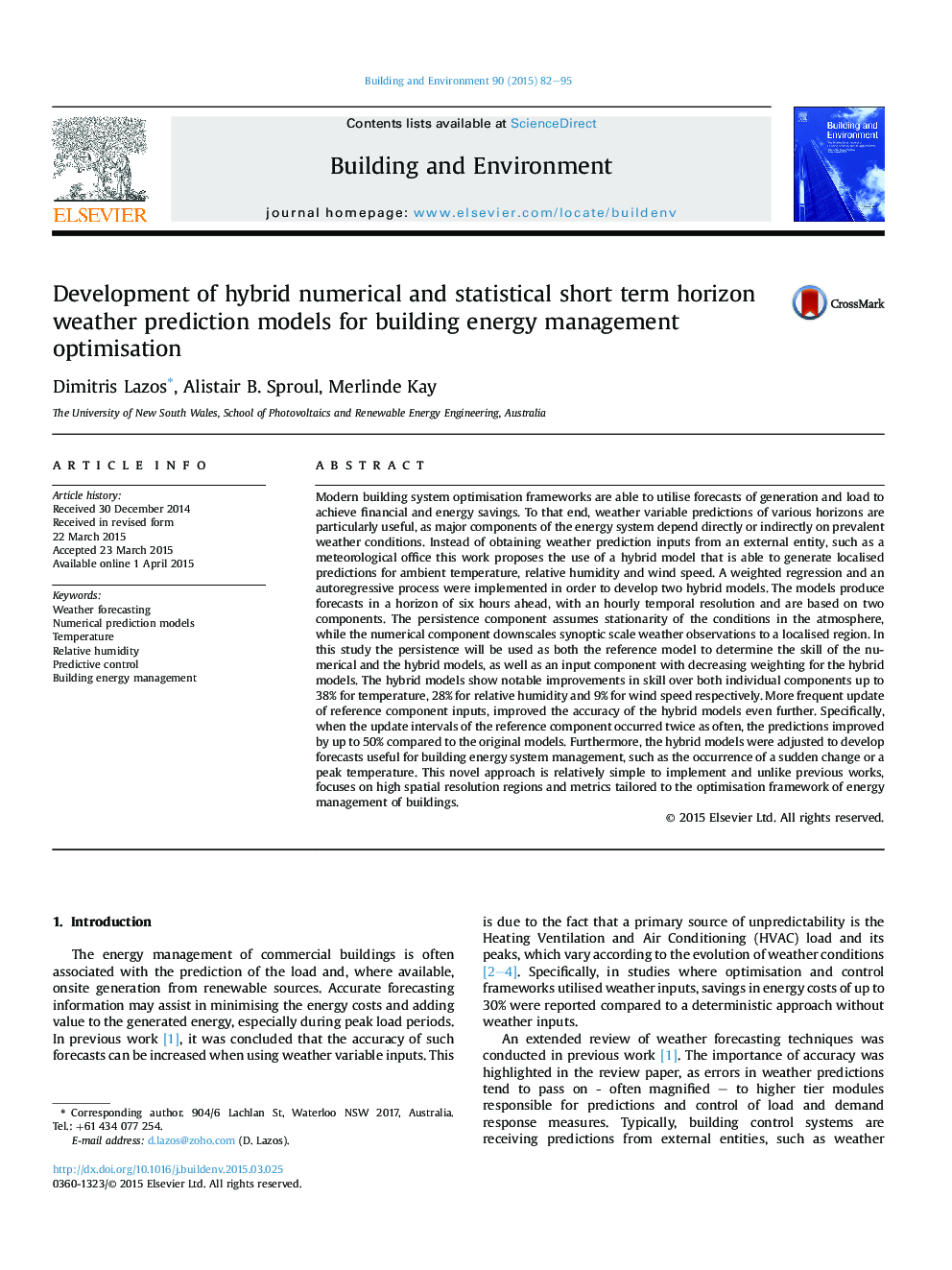| کد مقاله | کد نشریه | سال انتشار | مقاله انگلیسی | نسخه تمام متن |
|---|---|---|---|---|
| 247859 | 502530 | 2015 | 14 صفحه PDF | دانلود رایگان |
• Numerical and statistical models for onsite predictions of weather are proposed.
• Model outputs can be used for energy management and control in buildings.
• Forecasting skill of hybrids is high compared to reference and numerical models.
• Forecasting skill can be improved with more frequent onsite weather inputs.
• Control modules may select outputs from different models depending on operation.
Modern building system optimisation frameworks are able to utilise forecasts of generation and load to achieve financial and energy savings. To that end, weather variable predictions of various horizons are particularly useful, as major components of the energy system depend directly or indirectly on prevalent weather conditions. Instead of obtaining weather prediction inputs from an external entity, such as a meteorological office this work proposes the use of a hybrid model that is able to generate localised predictions for ambient temperature, relative humidity and wind speed. A weighted regression and an autoregressive process were implemented in order to develop two hybrid models. The models produce forecasts in a horizon of six hours ahead, with an hourly temporal resolution and are based on two components. The persistence component assumes stationarity of the conditions in the atmosphere, while the numerical component downscales synoptic scale weather observations to a localised region. In this study the persistence will be used as both the reference model to determine the skill of the numerical and the hybrid models, as well as an input component with decreasing weighting for the hybrid models. The hybrid models show notable improvements in skill over both individual components up to 38% for temperature, 28% for relative humidity and 9% for wind speed respectively. More frequent update of reference component inputs, improved the accuracy of the hybrid models even further. Specifically, when the update intervals of the reference component occurred twice as often, the predictions improved by up to 50% compared to the original models. Furthermore, the hybrid models were adjusted to develop forecasts useful for building energy system management, such as the occurrence of a sudden change or a peak temperature. This novel approach is relatively simple to implement and unlike previous works, focuses on high spatial resolution regions and metrics tailored to the optimisation framework of energy management of buildings.
Journal: Building and Environment - Volume 90, August 2015, Pages 82–95
